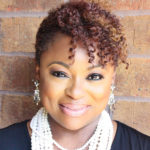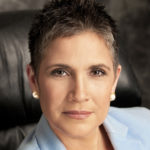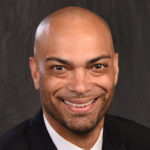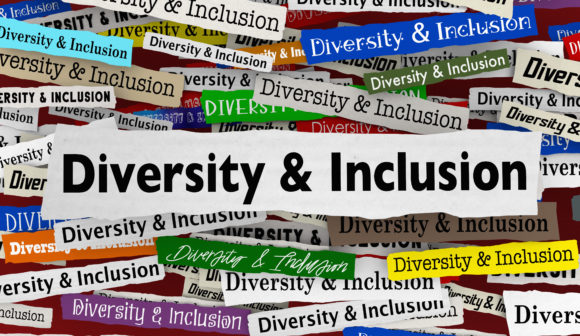The deaths of George Floyd and Breonna Taylor by white police officers last year sparked protests and examinations of racial injustice and inequities across the country. Individuals and businesses responded by vowing to better support communities of color.
Experts on the topic of diversity in the insurance industry say there hasn’t been enough done to attract or retain talent from the Black community as insurance continues to be a predominantly white workforce and discussed how to bridge the gap in an Insurance Journal webinar this summer, “How the Insurance industry Can Be An Active Ally to the Black Community.”



In a wide ranging and frank discussion, panelists Mernice Oliver of Mernice Oliver International and founder of the National Association for Advancement of Women in Insurance (NAAWI); Nina Boone, North American leader for Diversity & Inclusion at Korn Ferry and the former U.S. Chair of Aon’s Diversity & Inclusion Board; and American Family’s Tyler Whipple, former director of Diversity & Inclusion for the company and now chief of staff, said the insurance industry has done itself a disservice by not bringing in more people of color or elevating those already in its ranks.
They hope the current attention on this issue will be a tipping point for the industry.
“This is not going to blow over this time and it shouldn’t blow over. This is a war on talent … there is such talent out there,” said Boone. “The number of people that are retiring in the next four years, the industry won’t be able to stand up if they don’t look at all of the talent that is available to them.”
Boone left Aon in 2019 after eight years to lead business development for Korn Ferry’s diversity and inclusion and board practices, specifically working with underrepresented talent. She said clients are recognizing they have work to do on this issue.
“We’re having more conversations than ever and this is why – because they are now accountable to their employee base, their customer base and their investor base – the world has changed,” she said.
Labor Data
But getting to this point hasn’t been easy for people of color in the industry, panelists said, and there is still a long way to go based on 2016 insurance workforce data from the Bureau of Labor Statistics that showed African Americans made up just 11.9% of the industry. Standard & Poor’s reported that number had increased slightly to 12.4% in 2019.
A 2018 study from the Independent Insurance Agents found only 2% of established agencies have at least one African American principal. About 4% of independent agencies have an African American principal or senior manager, compared with 88% of those with white agency leadership.
A 2018 report by Marsh that included participation from members of the National African American Insurance Association said 70% of respondents either agreed or strongly agreed that there are greater obstacles for African Americans in the insurance industry compared with other minorities. Respondents said the key barriers to entry into the insurance business were lack of exposure, lack of networks, lack of experience, racial bias, lack of educational preparation and gender bias. They said race was also a factor in hiring, promotions, new assignments and if Black insurance professionals were included in events, key meetings, or opportunities with customers.
In recalling her own experiences as a Black insurance professional, former agent Oliver, who now runs an insurance agency consultancy business and NAAWI, both of which are focused on developing women of color in the industry, said early on in her career she had to “embrace being comfortable with being uncomfortable.”
“There were often times, quite honestly, that yes, I felt isolated and perhaps excluded from advancement opportunities and decision-making scenarios,” said Oliver. “Honestly, as a black leader in the insurance industry, I do believe it was harder for me to advance as opposed to my white counterparts.”
“Friends and Family’
Boone said one of the biggest reasons the industry has struggled with diversity boils down to “friends and family.”
“When you just bring the people that you know in, when you don’t open it up, when you don’t actively look for those candidates, then you’re never going to move anyone forward,” she said. “As long as you continue with the friends and family network, insurance will never look any different.”
While at Aon, Boone worked with a team to diversify the company’s internship program and recalled the biggest hurdle was employees and clients expecting their children to be part of it. She said she was “taken aback” when she went to do a presentation to the interns and walked into a room of 42 young white men, leading her to wonder if employees had any daughters.
“How is it that any industry, and the insurance industry we’re talking about today, only wants to interview and look at a small corner of the population when it comes to talent that needs to be brought in for innovation into an industry that is incredibly old school and needs revamping,” she said.
Aon created an inclusive process that involved actively seeking out diverse candidates and forming a diverse interview team.
“We all agreed on how we were going to work that process and chose the best talent,” she said.
Business Results
Whipple has worked at American Family Insurance Co. for 17 years, and during this time, he rose from an underwriting manager to director of Diversity & Inclusion to vice president of Inclusive Excellence and now serves as chief of staff. Whipple said he recognized several years ago that although the company was focused on diversity and inclusion, he “didn’t see a lot of people like myself in senior roles” or in the product development space.
Whipple says there is a tie between diversity, equity, and inclusion, not just to social good, but also for “great business results.”
Over the years, Whipple has worked with company leadership to accelerate its diversity and inclusion efforts. Now, American Family is recognized as a leader in this space, with the opening of the American Family Insurance Institute for Corporate and Social Impact in 2018 and the signing of the CEO Action for Diversity and Inclusion Pledge as part of its commitment to bringing societal and corporate change, among other initiatives.
Both Whipple and American Family CEO Jack Salzwedel have been outspoken on the need for big companies to address systemic racism, support minority communities and hire diverse talent. The company has made increasing the diversity of its workforce part of its strategic goals and continuously works to foster an inclusive culture.
“Now we’re focused on… not just the internal workings of the organization but how do we breed what’s going on externally in society with what’s going in our organization and how do we do good on both sides,” Whipple said.
American Family leadership also recognizes that fostering talent in an organization and bringing it into product development and its leadership team helps the company expand its customer base and grow, Whipple added. He said other companies are starting to understand how a lack of diversity impacts the top line/bottom line.
“I do believe that as an industry, we’re starting to see this similarly to how consumer product organizations see this, where you’ve got to have a connection with your current and future customer, and current customers are likely on the decline,” he said. “I think there’s a recognition there. My question is how quickly will we as an industry accelerate the pace of change in order to get ahead of the curve?”
Industry Barriers
There are companies in the insurance industry spending money and time to develop people of color, Boone said, particularly women, but they don’t follow through on advancing them in the organization or putting them into leadership roles.
“It’s an abusive relationship where we’re being developed and we’re being promised things and it never materializes because what happens is someone who is less qualified, has never had any development or anything ends up soaring right ahead,” she said.
Boone said these undervalued employees then leave for other organizations or, in the case of Black women, become entrepreneurs and start their own businesses.
“Black women are the number one entrepreneur group in the country. This is not a coincidence. This is because they cannot get anywhere in their current organization and these are women who it takes them three times as long to raise capital and yet they do it; they’re more likely to never succeed and yet they do. Isn’t that someone you want on your leadership team?” she said. “That development and advancement needs to happen, and we need to be really real about that.”
In Oliver’s case, she left the insurance agency workforce in 2011 because of the limited opportunities available to her. She realized she would have to build her own roadmap because she did not believe – and was “pretty much told” – she would not be afforded the same opportunities as her white peers. Her experience led her to found NAAWI because there were no insurance organizations helping minority women reach leadership positions.
While many companies talk about the need for diversity and inclusion, and state they are committed to doing more, Oliver said it’s ultimately not happening.
“I really believe it’s because it’s uncomfortable and it’s inconvenient. It takes time and focus to really be serious about helping women of color, LGBTQ, [the] marginalized smaller groups of people, to help them advance. It just requires resources and time, which I believe quite frankly, companies just don’t want to do it,” she said.
The industry has also struggled, Whipple said, in branding itself and attracting young people of color who he said are trendsetters in a lot of ways. And it isn’t great at doing outreach to communities of color, he said, noting the huge financial literacy gap between them and white communities.
“I think as an industry, we do a really good job of writing checks to communities and letting communities determine where those checks should go,” Whipple said. “But if I look at the areas where we can make an impact in the community that also translates into how we grow our industry, I’m not sure we’ve closed that delta very well as an industry. I don’t think we’re doing as much as we can, although candidly, we’re doing more than we were a decade ago.”
American Family has taken an equity approach at not just how it hires and attracts talent, Whipple said, but also how it develops, prices and sells its products. That includes understanding how larger systemic social issues like credit ratings or past criminal history can impact communities of color and what they pay for insurance.
“We try to look at this holistically in terms of how we source talent, how we underwrite customers, how we price customers, from an equity lens,” he said.
Oliver said agents like herself have worked to educate communities of color about insurance, but there has been an overall failure at the company level to show up for these marginalized groups, other than with financial donations.
Having more people of color as part of the agency sales force would absolutely make a difference in addressing the education gap in black communities, who are now “sorely underrepresented,” she said.
Where from Here?
The insurance industry’s support of communities of color must go beyond making financial contributions, Boone said.
“That is wonderful and I do not want to diminish that at all, but let me tell you – open your door to advancing us so that all of a sudden we can live in communities where our children are safe. We can live in communities where schools are terrific. We can live in communities where we don’t pay as much for our insurance,” she said. “As long as you don’t live those values inside your organization that you purport to believe in so heavily with your finances outside the organization, we’ll never see the progress that we really want to see.”
She challenged companies to examine their purported values and commitment to diversity and inclusion, and then actually find out from the people of color in the organization if they are measuring up.
“And if you’re not, make a commitment to measure up, because I think everyone’s made those statements, everyone has great values and missions,” she said. “If you’re not truly living that… then make those changes and that commitment to.”
Whipple acknowledged it can be tough for white company leaders to ask people of color in their organization what they need, but emphasized people of color walk into rooms full of white people every day and say, “What do you need?” He said it requires people to summon a little courage and get the conversation started and “make sure this conversation doesn’t end.”
“When you step into things like systemic racism and white privilege, that’s a level of risk but I think folks have to accept that risk in order to really make change … start somewhere,” he said. “Everybody thinks you have to have it perfect to start – just start. It’s a target rich environment. You can find a number of places to get involved but you just got to start.”
Change can only happen when industry leaders begin the dialogue, Oliver said, gain foundational knowledge of systems of oppression, and acknowledge the inequalities inside of our organizational structures.
Yes, it is uncomfortable, she said, but “we have to just get started somewhere and have those difficult conversations, allow ourselves to be inconvenienced but include those of us who have experienced it every day. If you are truly serious about change, then I think it’s necessary that we do it now rather than later,” she said.
The time has come for the industry to step up, Boone said, and the good news is many appear to be committed to doing the hard work.
“This is truly about execution now. There are no more excuses. No one’s going to look away and your talent and your organization will suffer if you really don’t start executing on opening up opportunities, educating and training and developing and then continuing that career path post-development and give people opportunities,” Boone said. “My hope is that in 10 years, the industry – even up at the top – looks tremendously different than it does today.”
Watch the Webinar: How the Insurance Industry Can Be an Active Ally to the Black Community
Topics Market
Was this article valuable?
Here are more articles you may enjoy.



 Wildfires, Storms Fuel 2025 Insured Losses of $108 Billion: Munich Re Report
Wildfires, Storms Fuel 2025 Insured Losses of $108 Billion: Munich Re Report  Alliant Latest to Sue Howden US Over Alleged ‘Smash-and-Grab’ Poaching
Alliant Latest to Sue Howden US Over Alleged ‘Smash-and-Grab’ Poaching  Consumer Acceptance of Telematics Widens, Says Survey
Consumer Acceptance of Telematics Widens, Says Survey  10 Highest Class-Action Settlements in 2025 Eclipsed $70B Total: Duane Morris
10 Highest Class-Action Settlements in 2025 Eclipsed $70B Total: Duane Morris 

